Exploring Jamaican Foods: Soursop (Guanabana) Fruit
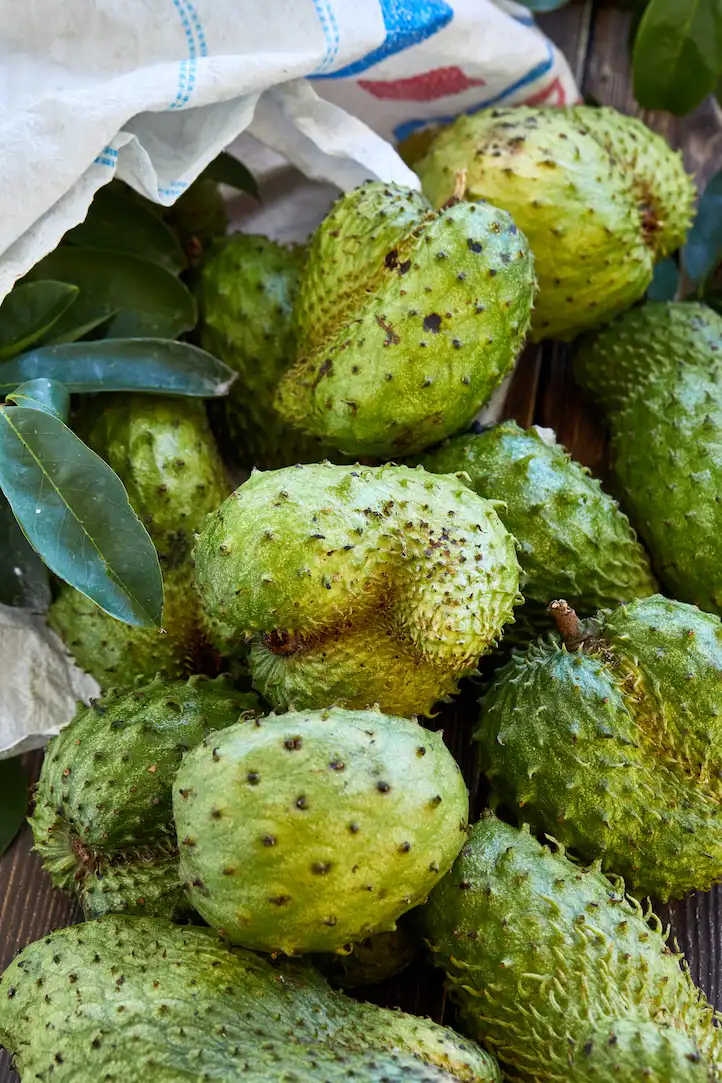
Soursop, or Guanabana, is a popular fruit in Jamaica. Graviola and Brazilian Paw Paw are names given to the soursop fruit in other parts of the world. The scientific name for soursop is Annona Muricata.
The soursop tree is widespread throughout the Caribbean, Central and South America, and Southeast Asia. Soursop trees grow best in warm, humid climates with ample rainfall, so they flourish in Jamaica.
The soursop fruit tree is evergreen and can grow up to 30 feet tall.
The soursop (guanabana) fruit varies in shape. Some soursops are oval or heart-shaped, while others have irregular shapes. The soursop varies in size, with fruits as small as 4 inches and as large as 12 inches.
The skin of the soursop fruit is green and covered with spines, and as the fruit matures, the skin changes from dark green to lighter green. The spines spread further apart and become softer.
Soursop is generally picked from the tree when it’s mature but before it is ripe. The fruit may fall to the ground and squash if left to ripe on the tree. A soursop fruit will take three to five days to ripen after being picked. Ripe soursops are soft and have a noticeable sweet, fruity scent. The spines will also easily break off when the fruit is ripe.
Is soursop related to jackfruit or cactus?
Although Soursop, Jackfruit, and Cactus all have green, prickly skin, they are not related fruits. Soursop belongs to the Annonaceae family, which includes other fruits like sugar apples. Jackfruit belongs to the Moraceae family, while the cactus belongs to the Cactaceae family. They all have distinct differences in their appearances, tastes, and uses.
Is the soursop (guanabana) fruit edible?
Soursop is an edible fruit when ripe and can be consumed raw. Some say soursop tastes like a combination of pineapple and banana.
Inside most of these segments of flesh are black, oval seeds that are smooth and hard. The segments surround the core, or heart, of the fruit, which is also edible.
The flesh, or pulp, of the soursop, comprises easily separated segments. Inside most of these pulp segments are black, oval seeds that are smooth and hard. These pulp segments surround the soursop’s core or heart, which is also edible. Usually, only the fruit’s flesh and core are eaten, while the skin and seeds are discarded.
Some Jamaicans break open soursop fruit by hand to get to the edible flesh. Others may peel off the skin first, either by hand or sometimes with a knife. Before eating the fruit, some prefer to separate the pulp into pieces and remove the seeds, while others don’t.
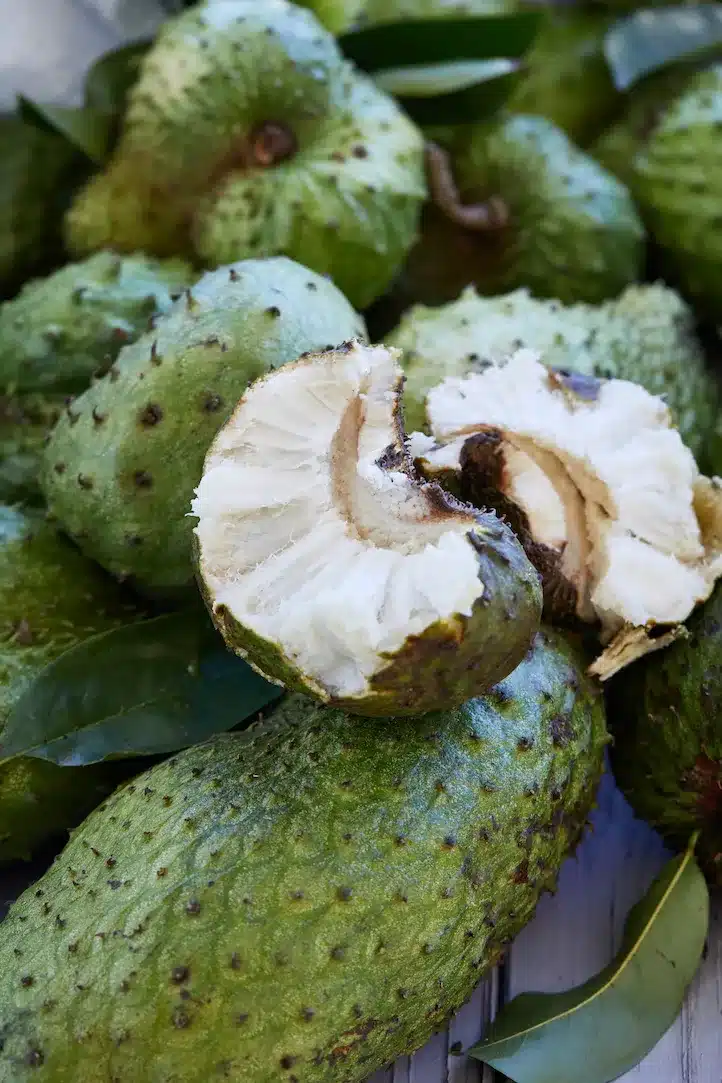
How is the soursop fruit used?
In addition to soursop being eaten as a tasty fruit, it is also used to make soursop juice in Jamaica. Typically, making the juice involves adding water to the flesh (or pulp) in a bowl—then squeezing or mashing the pulp with the hands to extract the soursop juice. After which, you would strain to separate the juice from the pulps. Soursop juice is either sweetened with milk or with lime and sugar.
In Jamaica, it’s typical for children to have soursop leaves as tea. The soursop tea has a pleasant taste so it is very easy to drink. The soursop leaf tea is often mixed with red root and dry banana leaf to make a tonic. This tonic is very nutritious and would often be given to malnourished children to improve their health.
What is the best way to use soursop?
Though the most common uses of soursop are to make juice or ice cream, this will not preserve all its nutritional content. The best way to use soursop is to eat it fresh from the tree. Soursop fruit has many health benefits, so when it is consumed raw, you obtain all its nutrients.
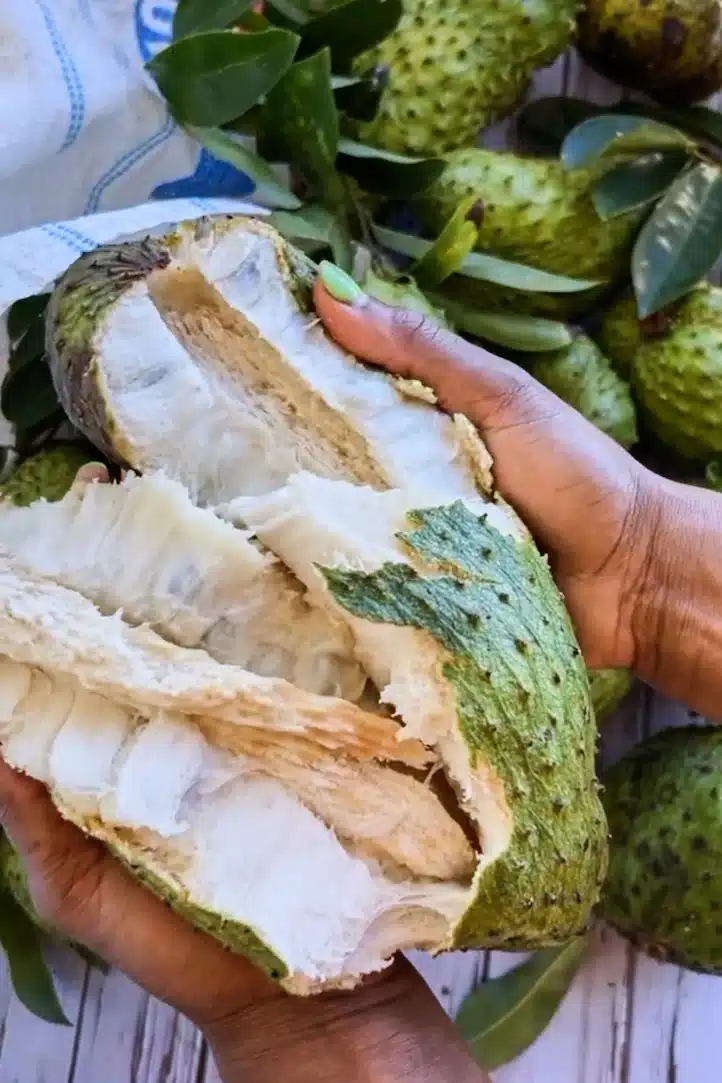
Benefits of the soursop (guanabana) fruit and plant
The soursop fruit is rich in vitamins and minerals such as vitamins C and B6, potassium, magnesium, and fibre. A whole soursop fruit provides about one-third to one-half of the daily recommended amount of potassium. The high potassium content in soursop can help reduce high blood pressure by reducing the sodium in the body.
Further, soursop also contains natural compounds, which studies have shown to have anti-inflammatory properties.
Soursop leaf tea is believe to relieve pain and helps to boost the immune system. Some studies have suggested that soursop leaves may contain potential cancer-fighting properties.
Soursop (Guanabana) plant is versatile, and its fruit offers many health benefits. Consuming raw soursop is a valuable addition to any healthy diet.
Disclaimer: The author makes no guarantees as to the curative effect of any herbs, fruits or plants mention on this website, and no visitor should attempt to use any of the information herein provided as treatment for any illness, weakness, or disease without first consulting a physician or health care provider. Pregnant women should always consult first with a health care professional before taking any treatment.
Related Post
Let’s stay connected! Find me on:
Also subscribe to my newsletter for updates on all new post!

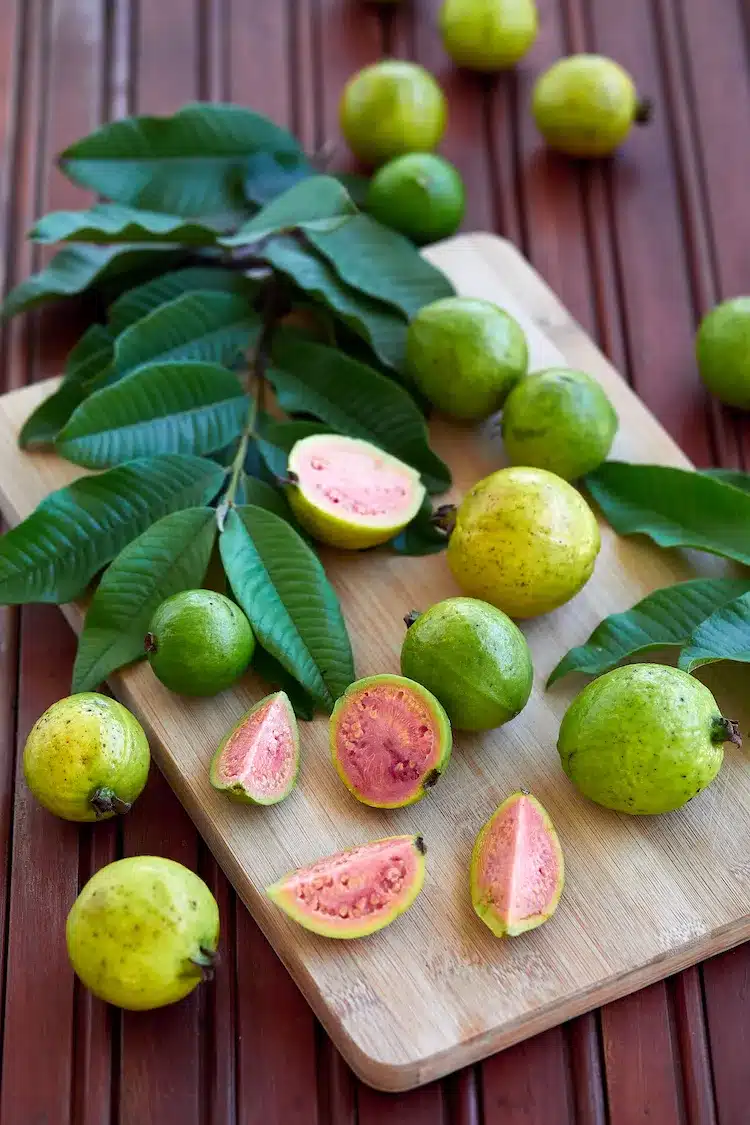


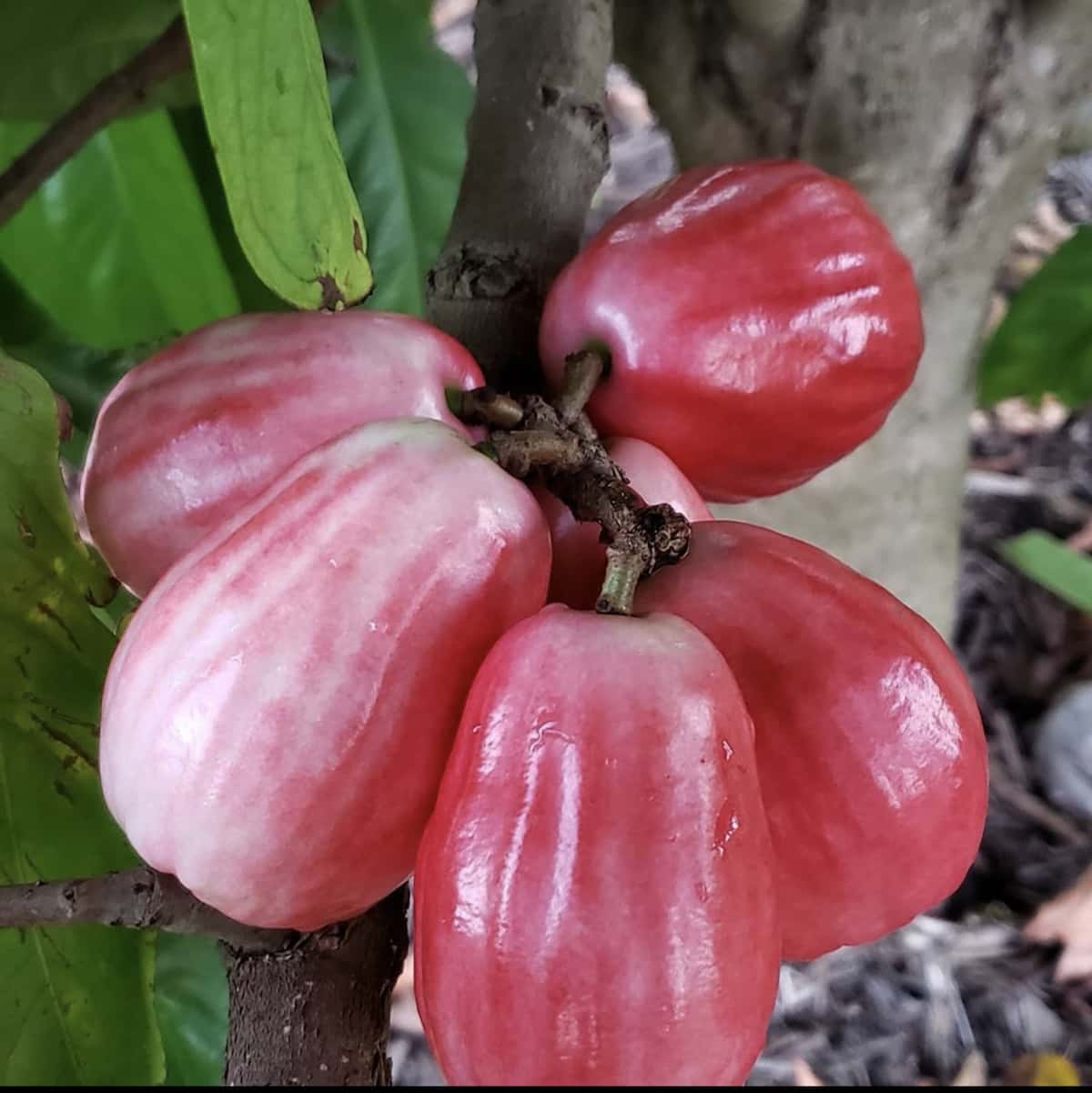
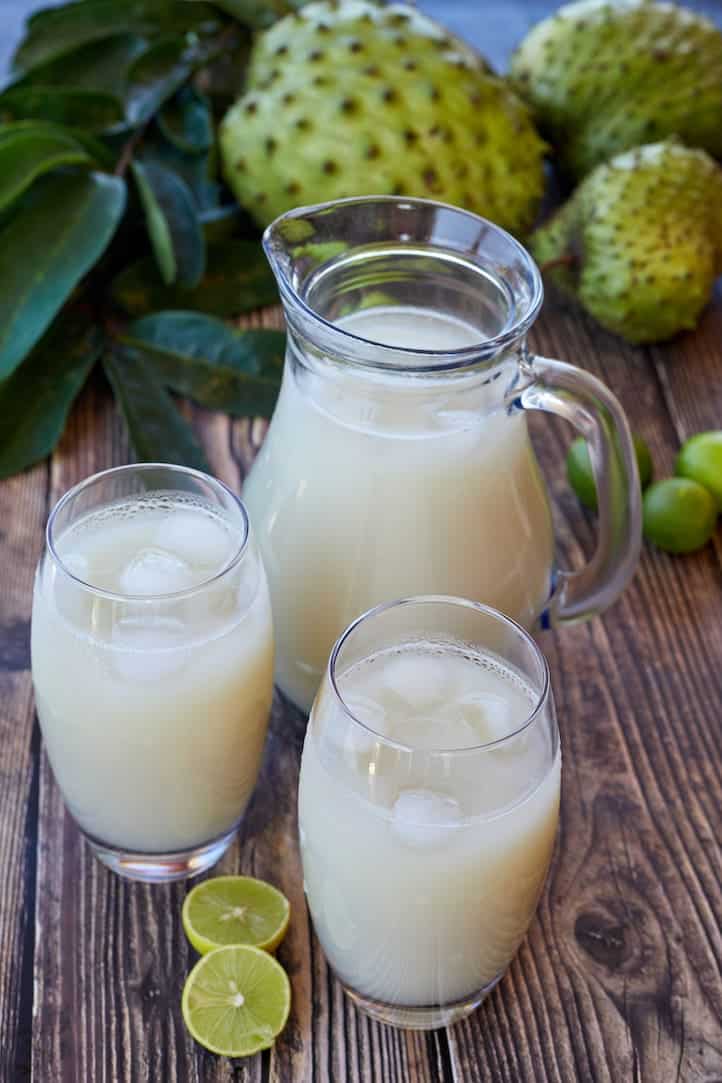
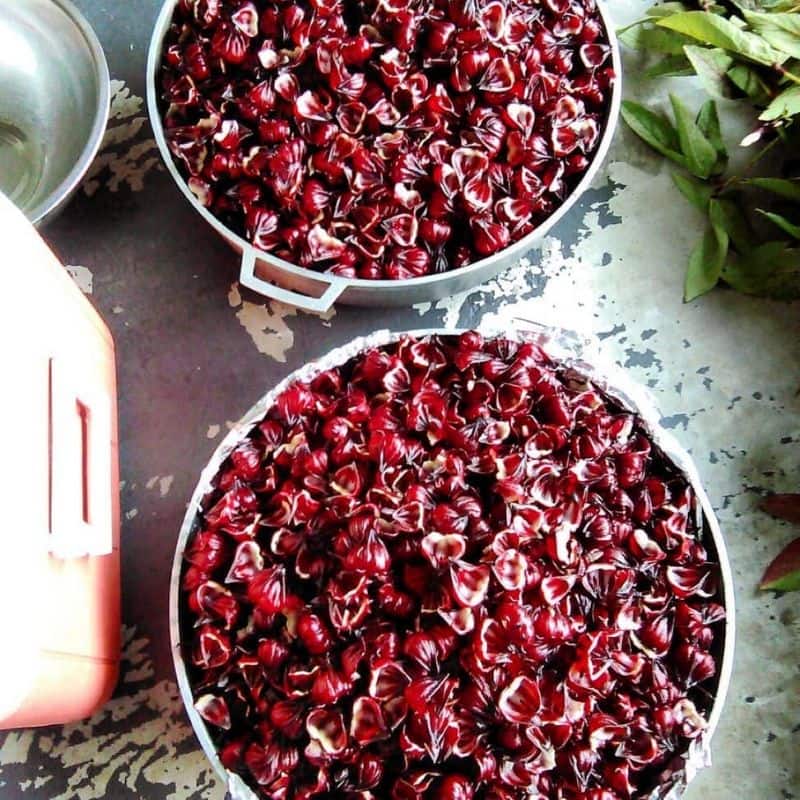
Edifying knowledge thank you!
You are welcome SEVEN, thanks for stopping by
Thank you Lesa. I’m looking forward to more of your health tips. I’m just about to eat a quanabana that I picked from my tree.🙏🏿😊
Wilhelmina Thomas
Quite informative and educative.
Thank you sò much.
Awesome information. Thank you so much.
Is soursop good for a diabetic patients
Noted with appreciation.
Am in Zimbabwe Africa am interested in the Soursop, how can I get it
Ilove soursop ,I enjoy it in any form,it’s delicious and full of health benefits, thanks lesa for writing about one of our native fruits…
Thank you
Where can I find soursop in the Denver area. I’ve been searching for a long time. Any suggestions or pointers are appreciated. Thanks.
Mike
Thank you for your website. I used to go to Jamaica every year for many years. I’ve grown old and probably will not ever have a chance to go back. I love your recipes
Thank you
Thank you are your comment Debbie, I am please that you appreciate what we do here.
Guanabana grows all overPuerto Rico & in my Abuela’s yard. My Mami would make a delicious pudding, mashed and baked, with cinnamon- so good! She’s passed so I wonder if you have a similar recipe. I miss her. I also drank Goya’s guanabana juice when I had cancer (in remission) and who’s to say if it helped. I’m still here and can’t wait to get your recipes. !Gracias mil!
The fruit helps in treating symptoms of prostrate enlargement. Very good when the juice is eaten with Bean Cake (Akara) or Moinmoin (Nigeria).
Thank you for posting.
Opeyemi from Nigeria
Am from Uganda that fruit is so sweet
Hi ! I heard about what soursop can do for you. I’m in California where can I get it from I would like to taste it sale in United States if so please let me know we’re.
How do you drink the sour chop leaf as tea,do l just pluck it and boil it.
Hi Ukap, they is a soursop leaf tea recipe under the beverage, which give you step by step instruction on making this simple tea.
1st visiting your site
Hi Thelma, thanks for stopping by, hope you visit again
Hi, I’m new here. Please can you tell me how to prepare the tea by using soursop leaves.
Hi Pastory, if you read through the article again you will notice there is a link that takes you to the soursop leaf tea recipe. Alternative https://jamaicanfoodsandrecipes.com/soursop-leaf-tea-recipe/
I am a Jamaican and my aunt and grandmother would make soursop juice with Sunday dinner .My grandmother would make soursop leaf tea and she says its good to control high blood pressure.
Hi Jackie, yes soursop juice is a popular “Sunday dinner drink”. That’s what the old people say about soursop leaf tea. Thanks for sharing
It’s not a Jamaican fruit
In Ghana and elsewhere in Africa, this friut sugar apple is also called sweet apple
Good Job. Your article was well articulated and informative, keep it up.
You are absolutely right about the info you have about the soursop ,I when back to Jamaica for the first time in 26 years and soupsop is the first thing I when to get I got a big ripe one and eat it in the tree
Thanks for the info. I’ve been curious about this strange looking fruit but never found anyone that I felt comfortable with to ask questions while shopping. I’m certainly going to be adding it to my diet.
How do u make the tea
Hi my name is Francis an agricultural Technician,I just plated over 65 seedlings of soursop trees round my farm in Nigeria,& still have over 15 seedlings I’m yet to transplant so how can one best exploit this to the best advantage …
2 things I travel to Jamaica for #1 Fresh Fish and #2 my Soursop
I’m not Jamaican nor ever been to Jamaica but I’ve grown and eaten soursop as far back as I could remember and so have my ancestors. This fruit grows in every tropical country so it’s
not a ‘jamaican’ fruit. It’s tropical.
Great thanks for this article. sour soup is expensive in Australia!
We have it in Nigeria. Precisely, in my compound.
Thanks for the update on soursop
How can I make tea out from the soursop leafs?
In Baradéres, small town of the Grand Anse Department, south of Haiti, where I grew up we used to have big trees of ‘corosol’ as the Haitians called it, and in Trinidad where I’m now spending a great deal of my time I buy it often at Tunapuna market. So, other parts of the world share it with what sounds as one of the Jamaican exclusivities.
By the way, for the Nigérian brother Ezeh who seems venturing into propagating it. It appears to me that it is a plant that is very susceptible and vulnerable to diseases and fungi more specifically, as I engaged someone in the department of Agriculture in Trinidad on the subject.
Thanks for sharing your recipes and information. I enjoy the Jamaican foods, fruits and vegetables.
I love the fruit but have a difficulty time ringing it here in Atlanta Georgia. Is it a seasonal fruit or is it available throughout the year? Also, where can I find it in my area?
It’s not a Jamaican fruit
In Ghana and elsewhere in Africa, this friut sugar apple is also called sweet apple
I’ve loved your website thanks am from Uganda and l love that fruit so so much.
IT IS DEFINITELY NOT A JAMAICAN FRUIT..GET YOUR FACTS STRAIGHT
Hi
I have the fruit here in Nairobi Keny and now I know it sour taste is normal
I planted the seeds and got 3 trees. Unfortunately, they never yielded any fruits.I eventually had to cut them down. Please,why did I not get any fruits?
Where can I get sour soup from . I currently have the tea . Is it the same ?
Guanabana grows all overPuerto Rico & in my Abuela’s yard. My Mami would make a delicious pudding, mashed and baked, with cinnamon- so good! She’s passed so I wonder if you have a similar recipe. I miss her. I also drank Goya’s guanabana juice when I had cancer (in remission) and who’s to say if it helped. I’m still here and can’t wait to get your recipes. !Gracias mil!
Thanks for the article. I am in the United States, so how can I purchase soursop fruit?
I have liked it from the start that I even didn’t know the English name of that fruit, thank you for teaching me.
How can I get to Jameica, me as a food science and processing technology student. Please I will be grateful for your response via my email
Thank you for the information. It’s a good one.
We have plenty of soursoup trees in Malaysia.Easy to grow n I have soursoup trees in my garden .When it started bearing fruits it will bears fruits all year round.Almost all the Village people have soursoup plants n because of too plentiful, people just let it drop n left on the ground to rod.
JILO MARTIN -KENYA
Thanks for the info. Soursop trees and fruits are common at the Coast but have gained a lot of relevance now due to the perceived (?) health benefits.
Do they help in managing diabetes?
Do they fight cancer ?
At times, you have to wait until 3 to 4 years before it will bear fruit, don’t cut them, the fruits will come out. I have it in my compound.
Hi do you sell the leaves pls? I’m in London and don’t know where to get it from, unless I get someone to get it from Africa for me. Any help?
Am in Nigeria, I can get enough for you.
Where can I buy in Los Angeles